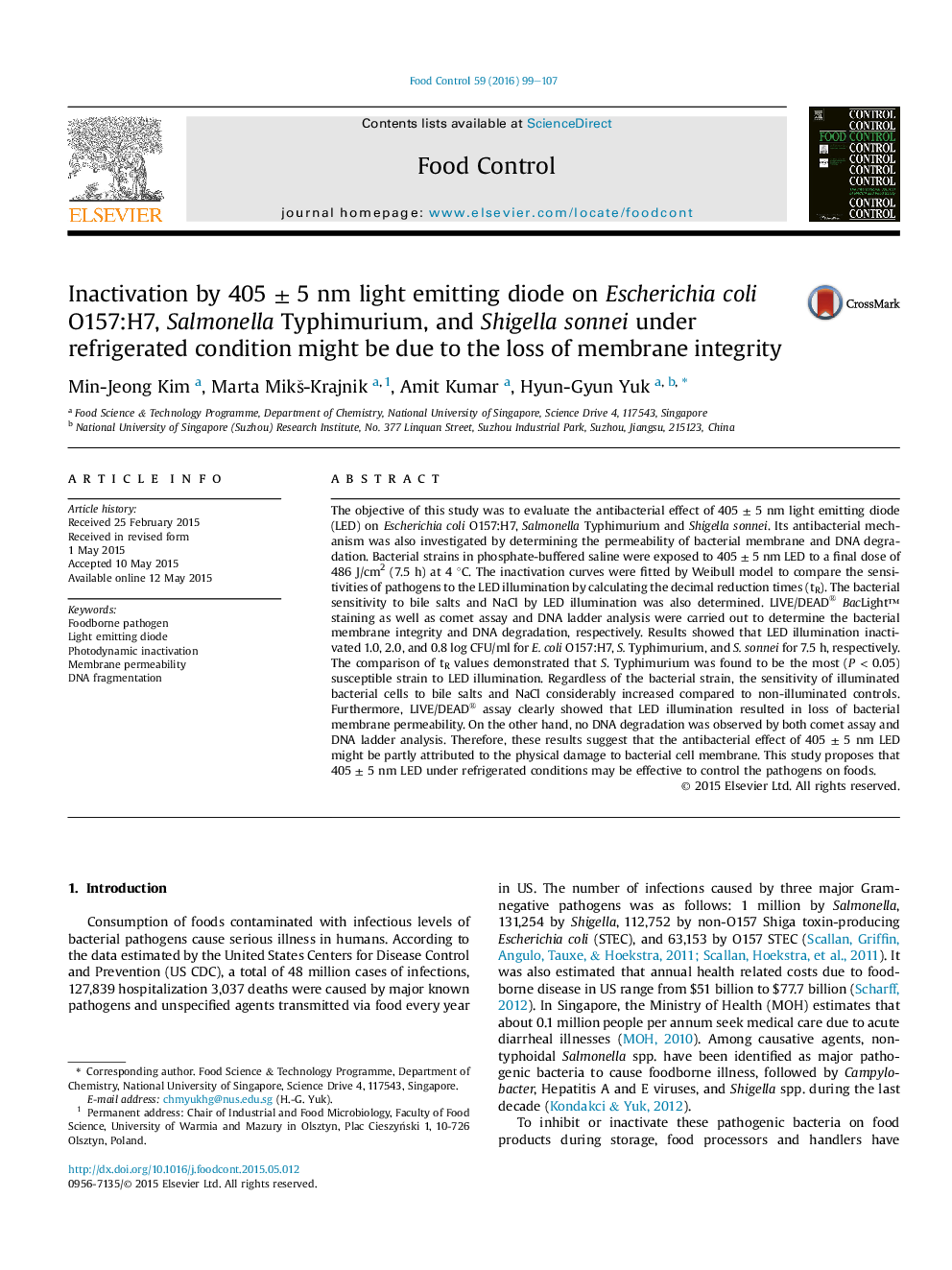| کد مقاله | کد نشریه | سال انتشار | مقاله انگلیسی | نسخه تمام متن |
|---|---|---|---|---|
| 6390510 | 1628403 | 2016 | 9 صفحه PDF | دانلود رایگان |

- A 405Â nm LED showed the antibacterial effect on the tested Gram-negative bacteria.
- Salmonella Typhimurium was the most susceptible to LED illumination.
- The bacterial inactivation by LED might be due to the cell membrane damage.
- Results suggest that the 405Â nm LED may be useful to control pathogens on food.
The objective of this study was to evaluate the antibacterial effect of 405 ± 5 nm light emitting diode (LED) on Escherichia coli O157:H7, Salmonella Typhimurium and Shigella sonnei. Its antibacterial mechanism was also investigated by determining the permeability of bacterial membrane and DNA degradation. Bacterial strains in phosphate-buffered saline were exposed to 405 ± 5 nm LED to a final dose of 486 J/cm2 (7.5 h) at 4 °C. The inactivation curves were fitted by Weibull model to compare the sensitivities of pathogens to the LED illumination by calculating the decimal reduction times (tR). The bacterial sensitivity to bile salts and NaCl by LED illumination was also determined. LIVE/DEAD®BacLight⢠staining as well as comet assay and DNA ladder analysis were carried out to determine the bacterial membrane integrity and DNA degradation, respectively. Results showed that LED illumination inactivated 1.0, 2.0, and 0.8 log CFU/ml for E. coli O157:H7, S. Typhimurium, and S. sonnei for 7.5 h, respectively. The comparison of tR values demonstrated that S. Typhimurium was found to be the most (P < 0.05) susceptible strain to LED illumination. Regardless of the bacterial strain, the sensitivity of illuminated bacterial cells to bile salts and NaCl considerably increased compared to non-illuminated controls. Furthermore, LIVE/DEAD® assay clearly showed that LED illumination resulted in loss of bacterial membrane permeability. On the other hand, no DNA degradation was observed by both comet assay and DNA ladder analysis. Therefore, these results suggest that the antibacterial effect of 405 ± 5 nm LED might be partly attributed to the physical damage to bacterial cell membrane. This study proposes that 405 ± 5 nm LED under refrigerated conditions may be effective to control the pathogens on foods.
Journal: Food Control - Volume 59, January 2016, Pages 99-107